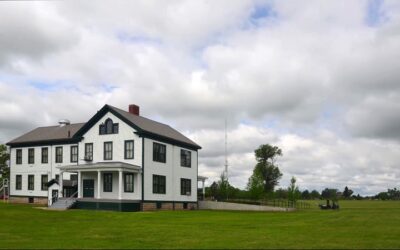John H. Powers (1831-1918) of Trenton is best remembered in Nebraska history for his work with the Farmers Alliance and for his unsuccessful gubernatorial race on the Populist Party ticket in 1890. However, in his brief autobiography, published about 1913, Powers wrote less of politics than of the “marked changes that have taken place in the country during the last 75 years,” especially in agriculture.
Powers recalled of farming during his boyhood: “The plows were of three sizes: a heavy prairie plow, an old ground plow for stirring the ground in the spring for the first preparation for putting in crops, and a small one horse plow, all these had iron bar landsides and wooden mouldboards. For small grain the ground was plowed, the seed sowed broadcast, and then it was harrowed in frequently with a wooden tooth harrow.
“For corn, the ground being first plowed, was marked out across the furrows into rows with a small plow, then marked across these rows in the same way, a boy following with a small basket of corn dropping three or four kernels at each crossing of the rows. Two men with hoes followed and covered the corn. Six or seven acres was a good days work. When the corn was large enough it was cultivated with the one horse plow and hoed, hilled up with the hoe. Twenty acres was a large field of corn for a man and two boys to cultivate. Now one man, with four horses and a two row disc cultivator and six shovel cultivator will easily tend 120 acres. . . .
“The grain used to be cut with a cradle (‘not a baby cradle’). Two acres a day was counted average work and it took a good workman to rake and bind it. It took half as much time to shock and stack it. Now seven men and teams with the modern 14 foot header will easily put thirty acres in the stack per day.
“The contrast in threshing was still greater. We used to thresh grain by cutting the bands of the sheaves, laying them in a thick row in a circle. A span of horses was then driven around upon this circle by a boy standing in the middle, while two men with wooden pitchforks kept stirring the straw to shake the grain out as it was threshed. When it was finished the team was taken off the straw raked off from the grain and stacked and the grain scraped up in a heap in the middle of the circle. This was repeated with the grain until all was threshed or the heap had grown as large as could be well managed. This then was twice run through a fanning mill, put up in sacks as the rude wagons would not hold threshed wheat. Contrast this with the present methods and machinery by which from one thousand to two thousand bushels of wheat are taken from the stack and delivered in water tight wagons per day.”



